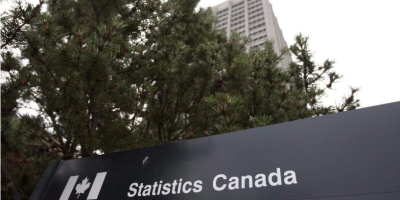
Every morning, Indigenous men at the Waseskun Healing Centre north of Montreal gather for a healing circle, where they smudge, share stories and sometimes gain spiritual guidance from elders.
The centre is the equivalent of a minimum-security prison but here, the men are called residents, rather than inmates, prisoners or offenders.
At the end of a healing circle on an early-spring morning, elder Grégoire Canapé shares a teaching.
"There’s this idea of bad apples, of taking the rotten one and throwing it out to save the others. But at the heart of that apple, there’s a seed," Grégoire says.
"If we find the seed and plant it, if we take the rot and turn it into fertilizer — nurture the sapling — we get a tree."
Grégoire's analogy speaks to a central tenet of healing lodges like Waseskun. It isn’t a facility to punish or stow away. It's a place where residents can take the time to heal from traumas and come to terms with the crimes that landed them in custody. Grégoire and his brother, Michael Canapé, visit residents every month to guide them on their healing journeys.
Waseskun is among 10 healing centres across the country that are funded by Correctional Service Canada and reserved for Indigenous offenders serving time in federal custody. The lodge, one of the oldest in Canada, sits amid the tall pines and rocky land of Saint-Alphonse-Rodriguez, 100 kilometres north of Montreal.
It is the only federally funded healing centre east of Manitoba and is one of six in the country that is Indigenous-run. Waseskun, which has been singled out by Public Safety Canada as a success story, serves only men and has 22 spots reserved for those who were sentenced to terms of more than two years.
However, Indigenous-managed lodges are chronically underfunded, despite being widely identified as a path forward in the relentless quest to reduce Indigenous incarceration rates, said Ivan Zinger, Canada's prison ombudsman.
And the numbers continue to spike, 25 years after a landmark Supreme Court of Canada decision found the over-incarceration of Indigenous offenders amounted to a full-scale crisis in Canada’s justice system.
The ruling on April 23, 1999, in the case of a young Cree woman named Jamie Gladue upheld a Criminal Code provision that instructed judges to pay "particular attention to the circumstances" of Indigenous offenders and to find alternatives to prison and jail "when it is reasonable to do so."
Over-incarceration of Indigenous people, however, is steadily becoming "worse and worse and worse," Zinger said in an interview.
They comprise 32 per cent of the incarcerated population but only five per cent of the overall adult population. The rising rates are particularly acute for Indigenous women, who now account for half of the female population in federal prisons, which Zinger described as a "sad milestone."
At the time of the Gladue decision, Indigenous offenders made up 17 per cent of the prison population, the Canadian Centre for Justice Statistics says.
Zinger said there's an urgent need for more and better-funded Indigenous-led healing centres to provide alternatives to conventional prisons. Almost three decades after the creation of the first healing lodge in Canada, there are only 139 beds across the six community-run healing lodges in Canada. Lodges run by the CSC provide another 250 beds.
"There is a real problem in terms of the approach taken and it's not one we find is respectful to the principles of reconciliation, self-government and self-determination,” Zinger said.
Barrie's News Delivered To Your Inbox
By submitting this form, you are consenting to receive marketing emails from: Central Ontario Broadcasting, 431 Huronia Rd, Barrie, Ontario, CA, https://www.cobroadcasting.com. You can revoke your consent to receive emails at any time by using the SafeUnsubscribe® link, found at the bottom of every email. Emails are serviced by Constant Contact
Some Waseskun residents say the biggest difference between the centre and other institutions is being in a community with other Indigenous people. In CSC prisons, offenders often receive some psychological aid, but culturally informed support is limited.
"I get a non-Indigenous person telling me how I'm supposed to feel as an Indigenous person," said Steven, a Mi'kmaq resident at Wasekun who, like others, spoke on condition he only be identified by his first name.
"Do you not see the irony in that? You have not walked in my steps. You don't know my people. You don't know what we've gone through."
CSC offers Indigenous prisoners an elder-led healing program called Pathways. But Stan Cudek, executive director and founder of Waseskun, says the unsafe environment in prisons can prevent people from opening up.
"Here, these guys disclose what they're in for based on, sometimes, their whole life history. You can’t do that in prison — you might get killed," Cudek said.
"These guys come here and they realize after a little while that it's safe here, that nobody's going to beat them up."
Larry, an Ojibwe resident, said he suffered new traumas when incarcerated at Stony Mountain Institution, a Manitoba federal prison notorious for violence. There, he faced protective isolation and threats from other inmates. At Waseskun, he's been able to engage in the healing process.
"I’m allowing myself to be open and letting my guard down and being vulnerable," Larry said.
At Waseskun, residents are permitted to wear their own clothes, rather than prison-issue uniforms.
"My whole life I’ve had ill-fitted clothes," said Steven, pointing to his camouflage hoodie with a cutout of an elk.
"If I want to buy my own clothes, I’m going to buy my own clothes. Because that's where self-esteem starts."
In federal prisons, Indigenous offenders "do excessively poorly," Zinger said. Authorities often assign Indigenous inmates to higher security levels and isolate them, he added.
Indigenous prisoners have higher rates of suicide attempts and self-harm, are more likely to serve longer proportions of their sentences and more likely to re-offend after release, Zinger said.
Data is limited on outcomes for healing-lodge residents following their release. A 2016 report from Canada's auditor general found that 78 per cent of Indigenous offenders completed required supervision to reintegrate into society after leaving lodges, compared to 63 per cent of those released from minimum-security facilities.
Despite repeated calls for more healing lodges and allowing communities to run them, a report Zinger released late last year found there were only 53 more beds in community-run healing lodges than there had been a decade earlier.
Furthermore, there are still no healing lodges in the North or in Ontario and Atlantic Canada.
The lodges operate at an average of 51 per cent capacity, Zinger said, because too few people are being transferred to them.
Zinger's report also found funding disparities between community-run healing lodges and those managed by CSC. He found Indigenous-run lodges receive 62 cents for every dollar provided to their CSC counterparts.
Correctional Services spokesperson Chris MacMillan said in a written statement that CSC-run
Lodges run by Correctional Services often require more funds because some residents have higher security needs, spokesperson Chris MacMillan said in a statement. They also have to cover health care expenses, unlike some Indigenous-run lodges, he added.
Zinger, however, said he fears the basis for the disparity runs deeper.
"I think, for me, it’s discrimination," he said. "They have to divest their control and authority to those healing lodges run by Indigenous communities."
This report by The Canadian Press was first published April 20, 2024
— Ally Lemieux Fanset, Jack Wilson and Faith Greco are journalism students at Carleton University





